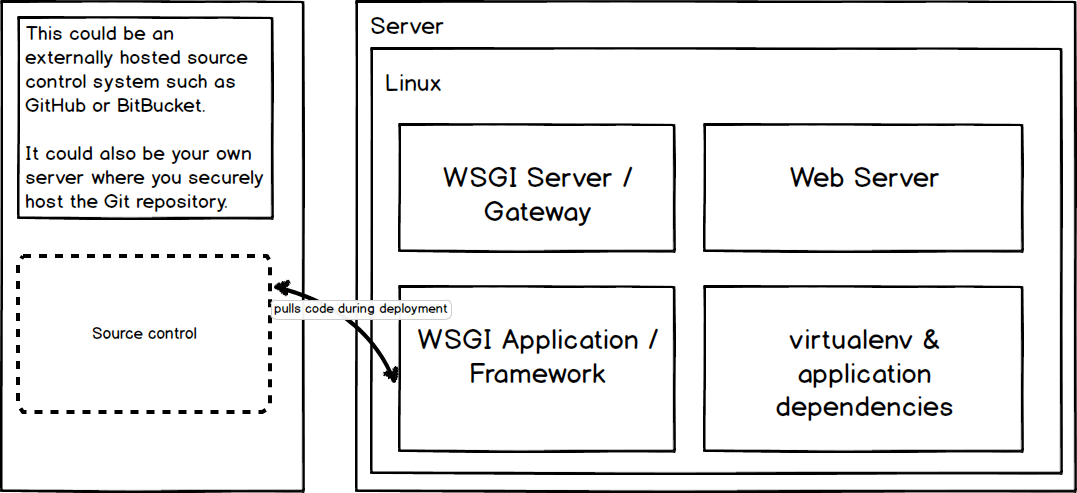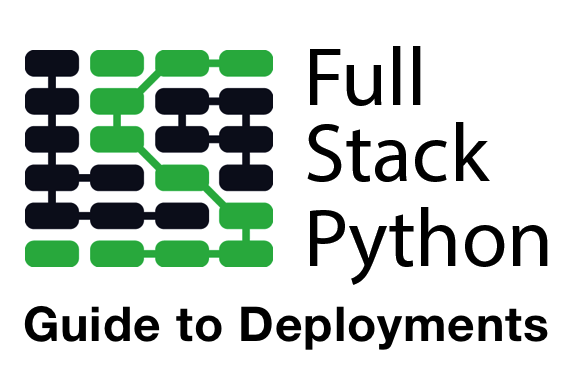Source control
Source control, also known as version control, stores software code files with a detailed history of every modification made to those files.
Why is source control necessary?
Version control systems allow developers to modify code without worrying about permanently screwing something up. Unwanted changes can be easily rolled back to previous working versions of the code.
Source control also makes team software development easier. One developer can combine her code modifications with other developers' code through diff views that show line-by-line changes then merge the appropriate code into the main code branch.
Version control is a necessity on all software projects regardless of development time, codebase size or the programming language used. Every project should immediately begin by using a version control system such as Git or Mercurial.
Source control during deployment
Pulling code during a deployment is a potential way source control systems fit into the deployment process.

Note that some developers recommend deployment pipelines package the source code to deploy it and never have a production environment touch a source control system directly. However, for small scale deployments it's often easiest to pull from source code when you're getting started instead of figuring out how to wrap the Python code in a system installation package.
Source control projects
Numerous source control systems have been created over the past several decades. In the past, proprietary source control software offered features tailored to large development teams and specific project workflows. However, open source systems are now used for version control on the largest and most complicated software projects in existence. There's no reason why your project should use anything other than an open source version control system in today's Python development world. The two primary choices are:
-
Git is a free and open source distributed version control system.
-
Mercurial is similar to Git, also a free and open source distributed version control system.
Hosted source control services
Git and Mercurial can be downloaded and run on your own server. However, it's easy and cheap to get started with a hosted version control service. You can transition away from the service at a later time by moving your repositories if your needs change. A couple of recommended hosted version control services are:
-
GitLab has both a self-hosted version of its open source software as well as their hosted version with pricing for businesses that need additional hosting support.
-
GitHub provides free open source repositories and paid private repositories for Git.
-
BitBucket also has free Git and Mercurial repositories for open projects, but adds private repositories for up to five users. Users pay for hosting private repositories with more than five users.
General source control resources
-
Staging Servers, Source Control & Deploy Workflows, And Other Stuff Nobody Teaches You is a comprehensive overview by Patrick McKenzie of why you need source control.
-
Version control best practices is a good write up of how to work with version control systems. The post is part of an ongoing deployment guide written by the folks at Rainforest.
-
This lighthearted guide to the ten astonishments in version control history is a fun way to learn how systems developed over the past several decades.
-
A visual guide to version control is a detailed article with real-life examples for why version control is necessary in software development.
-
An introduction to version control shows the basic concepts behind version control systems.
-
What Is Version Control? Why Is It Important For Due Diligence? explains the benefits and necessity of version control systems.
-
About version control reviews the basics of distributed version control systems.
Git resources
-
Pro Git is a free open source book that walks through all aspects of using the version control system.
-
Git in Six Hundred Words is a clear and concise essay explaining the fundamental concepts of Git.
-
A Hacker's Guide to Git covers the basics as well as more advanced Git commands while explaining each step along the way.
-
Think like a Git is another introduction that focuses more on the graph theory and conceptual ideas behind Git to help the reader understand what's happening as they use Git commands.
-
A practical git introduction is exactly what the title says it is. This is a well written guide with plenty of code snippets to get you up to speed with Git.
-
Git from the inside out demonstrates how Git's graph-based data structure produces certain behavior through example Git commands. This is a highly recommended read after you've grasped the basics and are looking to go deeper with Git.
-
git ready has a nice collection of blog posts based on beginner, intermediate and advanced Git use cases.
-
git-flow details a Git branching model for small teams.
-
GitHub Flow builds on git-flow, goes over some of the issues that arise with it and presents a few solutions to those problems.
-
Git Workflows That Work is a helpful post with diagrams to show how teams can create a Git workflow that will help their development process.
-
"Our Git Workflow" by Braintree goes over how this payments company uses Git for development and merging source code.
-
Code Sleuthing with Git shows how to review past changes when a deployment goes wrong to figure out what the heck happened.
Source control learning checklist
-
Pick a version control system. Git is recommended because on the web there are a significant number of tutorials to help both new and advanced users.
-
Learn basic use cases for version control such as committing changes, rolling back to earlier file versions and searching for when lines of code were modified during development history.
-
Ensure your source code is backed up in a central repository. A central repository is critical not only if your local development version is corrupted but also for the deployment process.
-
Integrate source control into your deployment process in three ways. First, pull the project source code from version control during deployments. Second, kick off deployments when code is modified by using webhooks or polling on the repository. Third, ensure you can roll back to a previous version if a code deployment goes wrong.
What do you want to learn about after source control?

Searching for a complete, step-by-step deployment walkthrough? Learn more about The Full Stack Python Guide to Deployments book.
Email Updates
Source Control
Need more detailed tutorials than you see here? Learn more about The Full Stack Python Guide to Deployments book.

